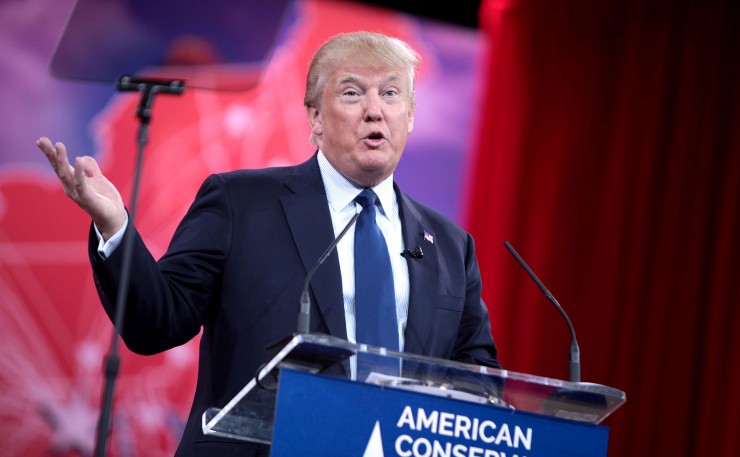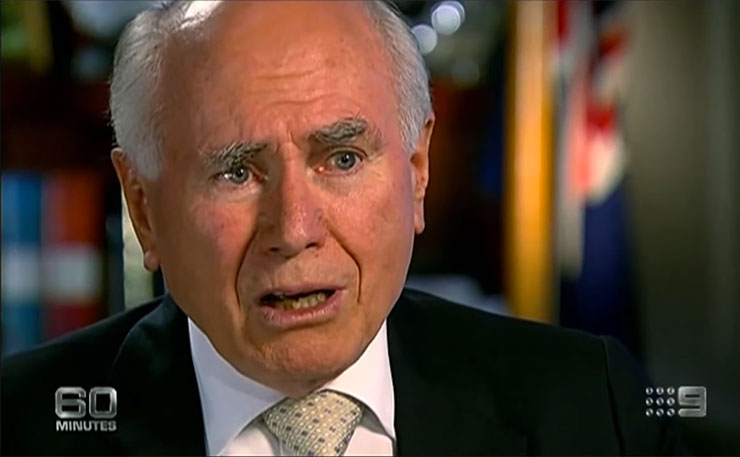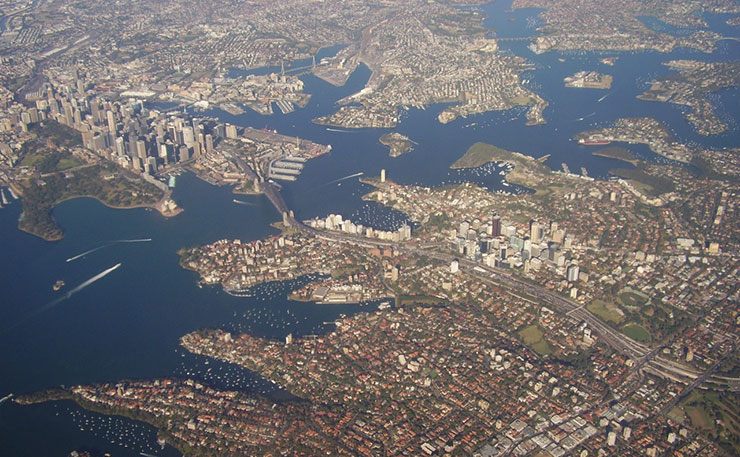Michael Bayliss and Mark Allen make the case for a more nuanced debate around building a nation.
The very mention of the word ‘sustainable population’ has proven to be a poison chalice to many on the left since the late 1990s, and probably for quite some time before that.
Firstly we had Pauline Hanson who proclaimed that we were being ‘swamped by Asians’. This put the first nail in the coffin, especially as many felt uneasy by the social Darwinist legacy of Malthus as well as several coercive (and highly publicised) attempts at population control in the Developing World by the West in the sixties and seventies.
Later, in 2002, John Howard won an election campaign over the Tampa ‘crisis’ and the slogan ‘we will decide who comes into this country’. A decade and a half later, we had Brexit in Britain, One Nation (again!) and Manus Island cover-ups in Australia. At a global level we have recently witnessed the rise of Donald Trump in the US as well as a growing right wing nationalist sentiment in Europe.
Once again, it appears that population = illegal immigrants = the rise of conservatism.
No wonder many on the left avoid the topic like the plague. “Whenever population is brought up, it always ends up with a white guy in his 60s ranting about the immigrants,” lamented one young environmentalist, who was a little bemused that one of the authors, a young(ish) lefty, was about to co-host a workshop on sustainable population.

Yet to ignore the population issue means that people like Trump and Hanson seize the narrative. This could potentially have far reaching consequences. One reason for the increasing support of parties such as One Nation (as well as the rise of the right wing liberals) is because more moderate parties such as Sustainable Australia have to battle for media attention.
As a result we see the population issue manipulated to meet an agenda that singles out a particular demographic or demographics. A prime example of this was when LNP candidate Fiona Scott tried to blame increased congestion in Western Sydney on asylum seekers during the 2013 election campaign. This is despite the fact that refugees comprise a small fraction of Australia’s overall annual population growth.
Rational discussion by those on the left would not only allow commonly repeated untruths such as this to be shown up for what they are, it would also provide an avenue for people to discuss population without feeling that they are being disenfranchised by their peers on the progressive side of politics.
Secondly, as long as the left avoids the population issue, we continue to play into the hands of big business, mainstream politicians, economists, and other powerful people who have a vested interest in maintaining a high level of population growth.
In a recent article in the Australian Financial Review, “Australia’s most prolific apartment developer” Harry Triguboff was asked about the potential oversupply of apartments in Sydney and Brisbane leading to falling rents, to which he responded, “I will simply bring in more migrants.”
John Howard is perhaps the poster child of the push for high population growth by divide and conquer politics and pulling the wool over society’s eyes. He basically shared his tactics on live radio back in 2014 when he said:
“One of the reasons why it is so important to maintain that policy is that the more people think our borders are being controlled, the more supportive they are in the long term of high levels of immigration… And one of the ways that you maintain public support for that is to communicate to the Australian people a capacity to control our borders and to decide who and what people and when come to this country.”
This can be interpreted as a decision to manipulate the Tampa ‘crisis’ in order to drive a wedge between the left and right while rapidly increasing non-refugee population growth to suit a neo-liberal based agenda.

If this sounds speculative, it is nevertheless what is currently playing out in Australia right now, and it is not only the refugee debate which has turned into an us versus them/left versus right debate. Our population growth figures speak for themselves.
Since the Tampa incident, Australia’s population has been growing by up to 400,000 per year, which amounts to the equivalent of another Adelaide every three years, and most of this is concentrated in our capital cities.
Of this growth, around 40 per cent is due to births and around 55 per cent is due to non-refugee migration, while refugees comprise a small percentage of our total population growth, (less than 10 per cent on average).
If we kept our current birth rate and substantially increased our refugee intake, we would have a broadly stable population, yet the word ‘population’ always seems to run into an argument about ‘refugees’ from both sides of the political fence.
A recent article in The Conversation lumped Judith Sloan’s recent assertions that our over inflated housing market is being propped up by a high rate of immigration with Peter Dutton’s despicable comments on Lebanese migrants. This kind of confusion is often reinforced by the mainstream media who rarely makes the distinction between refugee and non-refugee migration.
A case in point is the ABC’s Vote Compass which has a section on migration. Yet it is dedicated solely to refugees and asylum seekers, and provides no opportunity to comment on the far larger proportion of migration into Australia. One way or another, wider discussion on population certainly is stifled, and this is not healthy in the long term, especially when there is no indication that this growth is showing any sign of slowing down.
A common assertion on the left that discussions around population is all about white privilege also does not stack-up. A recent study reported by SBS shows that many people born overseas believe that our population growth rate is too high, and that immigration should be slowed.
This is particularly true for second generation migrants. Given Australia is now increasingly a nation of migrants (with nearly half of us being born or having family from overseas) it can be said that we are a country of migrants questioning our level of migration.
This could in part be because many ethnic communities such as Carlton, Richmond and Footscray in Melbourne are becoming increasingly gentrified through the densification of the built form that comes with increased population pressure. The dislocation of people on lower incomes and incoming migrants to the urban fringe is also having an increasing social impact.
A recent study by Bob Birrell and David McCloskey came to the conclusion that new migrants are increasingly having to delay starting a family due to the limitation of services that are available.
This is a reflection of the increasing choice that the inhabitants of our major cities have to make between energy guzzling sprawling suburbia or energy guzzling pre-fab concrete apartments in the inner areas.
This will not change under our current negative gearing/property developer driven society, which is underpinned by rapid population growth.
Even with a massive change in paradigm, whereby planning and development is put back in the hands of people who are not driven by the almighty dollar, it would continue to be a struggle for infrastructure and sustainable planning outcomes to keep-up with the current rate of population growth.
For example, the Fishermans Bend urban renewal project in Melbourne will take decades from inception to completion, yet it will only absorb 10 months worth of Melbourne’s population growth.

The fact that Melbourne is set to double in size by sometime in the 2040s means that a massive injection of infrastructure will be required in under 30 years, and the city is already struggling to keep-up with congested trains at rush-hour as well as long waiting lists for childcare and health related services.
As Sustainable Australia’s William Bourke says, “governments do not receive enough proportionately extra tax from each new citizen to provide for this disproportionately expensive infrastructure. It used to be easy to deliver infrastructure when the government owned the land, but because our major cities are already planned and built up, there is no room to retro-fit new infrastructure without expensive additions like land buy-backs and tunnelling.”
Therefore, while rapid population growth increases GDP, it does not take into account the economic externalities such as infrastructure debt (which is huge), congestion and longer commutes.
In other words if we continue with business as usual, new migrants will continue to be housed in a never-ending urban sprawl with no sense of community, while Melbourne becomes less and less resilient in terms of providing locally grown food, and so much more.
This will not do anyone any good, amid a probable future scenario where developed countries will need to house many more displaced people as a result of climate change and resource scarcity, especially if we are left with a terrible legacy of inappropriate growth for growth’s sake.
In our opinion, the left generally have very sound ideas when it comes to addressing population issues in a worldwide context. For example, many will agree that the world’s population will begin to stabilise once welfare and non-coercive family planning is in place in the areas where it is needed the most.
The Greens do have a sound vision for foreign aid, unlike the LNP who repeatedly cut the foreign aid budget.
We also need to be reminded that population growth should never be seen as a more important issue than the over consumption that is perpetuated by capitalism (although it can be argued that capitalism encourages both).
A holistic population policy is one that firstly acknowledges that a high rate of growth can never be resolved through the movement of people alone, and that the core issue lies in empowering people with access and choice to family planning policies through non-coercive grassroots foreign aid that specifically empowers women.
The seriousness of the climate/biodiversity emergency is such that we should not be pumping tonnes of carbon into the atmosphere to create car dependent urban sprawl. We should also not be continuing on our current trajectory of poor quality profit-driven high-density, which will come at a high short-term and long-term environmental cost.
Furthermore, we should not be spending billions of dollars on the infrastructure to do this at the expense of pro-active aid that could otherwise be directed to the 99.9 percent of people in the world who will never have any hope of coming to Australia.
A migration policy that positively discriminates in favour of refugees, lowers climate emissions to prevent the need for large numbers of future refugees and frees up billions in proactive foreign aid is surely not racist. All of this can be done whist returning to our long-term average of 70,000 net migration a year, which would easily allow for family reunions and skilled migrants.
We do not expect everyone on the left to agree, but to close down all discussion on population could have far reaching consequences in these uncertain times.
Donate To New Matilda
New Matilda is a small, independent media outlet. We survive through reader contributions, and never losing a lawsuit. If you got something from this article, giving something back helps us to continue speaking truth to power. Every little bit counts.






